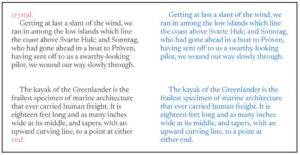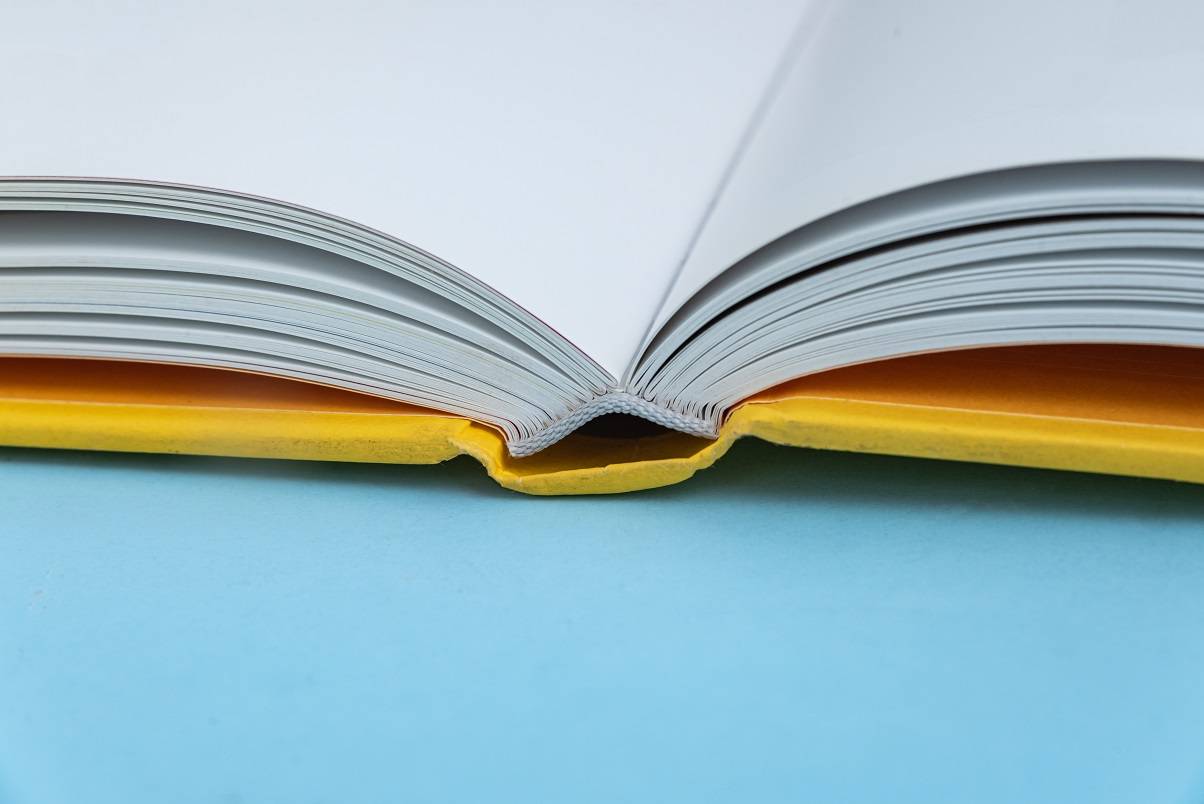Are you an aspiring author looking forward to publishing your book one day? Then you should know that, apart from a good pitch and a good story, you also need good book formatting. Book formatting helps create a good impression on agents, publishers, editors, and readers. Without a good format or layout for your book, you risk jeopardizing the efforts you went through while writing your story. This means you need to know how to format a book properly.
Why is formatting important in a book?
Book formatting is crucial when it comes to writing and publishing a book. Whether you want to be traditionally published or you want to independently publish your book, formatting will have a lot of impact on the reception and perception of your book.
Here are a few reasons why learning how to format a book is of utmost importance:
- Readability: Proper book formatting enhances readability. This makes it easier for readers to navigate through the text. Well-designed fonts, appropriate spacing, and paragraph alignment contribute to a comfortable reading experience for the audience.
- Organization: Book formatting helps to organize content effectively, and will also help readers understand the hierarchy of your book. Clear chapter headings, subheadings, and section breaks guide readers through the structure of the book, enabling them to locate specific sections quickly and understand your writing.
- Visual Appeal: Aesthetically pleasing formatting can also attract readers and hold their attention. This means writers need to thoughtfully choose typography, page layout, and design elements. Paragraph indents and different fonts will also add to the visual and writing styles of the story. These will contribute to the overall visual appeal of the book and enhance its attractiveness on print versions and online platforms.
- Professionalism: Good book formatting conveys professionalism and attention to detail. These are essential for gaining the trust and respect of agents, editors, and readers. Sloppy formatting can detract from the quality of the content and may lead to negative perceptions of the author or the publisher.
- Accessibility: Proper book formatting ensures accessibility for all readers, including those with visual impairments or reading disabilities. Features such as consistent styling, appropriate font sizes, and adequate spacing contribute to the overall accessibility and inclusivity of your book.
- Consistency: Consistent formatting throughout the book maintains coherence and reinforces the author’s voice and style. Uniformity in design elements creates a cohesive reading experience. This includes elements such as font choices, margins, indentation, and more.
- Enhanced Understanding: Book formatting, of course, can also help to convey meaning and emphasize key points within the text. Techniques such as bolding, italicizing, and using different font sizes or colors can draw attention to important information and aid comprehension. This also applies to unique styles, illustrations, notes, and more.
Overall, book formatting is essential, as it influences the reader’s initial impression and significantly impacts their reading experience and comprehension of the story.
What is the proper formatting for a book?
Book formatting can depend on the type of book (print, e-book/digital) and the genre or category of the book (fiction, non-fiction, middle grade, young adult, contemporary, romance, fantasy, and more). However, there are some fundamental practices that can apply to various books in general. Aspiring authors should follow and implement these for their own novels if they want their book to be professional, readable, and visually appealing.
Here are some of the best tips on how to format a book:
#1 Keep it consistent (font, spacing, etc.)
Maintain consistency throughout the book in terms of font styles, sizes, spacing, margins, and other formatting elements. This ensures a cohesive and professional appearance.
For the font size, modern books are usually set at 10 or 12 points for printed book formats. Larger sizes may be needed for digital formats to accommodate various screen sizes. Margins are set to one inch on all sides, with the U.S. standard page size of 8.5 x 11 inches. Sufficient margins can prevent the text from feeling cramped. Double-spaced line spacing is also recommended when book formatting to ensure that readers, especially your editor, can see every word. These simple text formatting rules will keep everything consistent and professional for your editor or readers.
#2 Choose readable fonts
Font is also a significant part of learning how to format a book. Select fonts that are easy to read, especially for long passages of text. Common choices in the publishing industry include serif fonts like Times New Roman or Garamond for print books, and sans-serif fonts like Arial or Calibri for digital formats of books.
Font changes are usually found in modern and fictional books, to represent a unique part of storytelling, including text messages, email correspondences, letters, journal entries, quotes, and more. Other popular, readable fonts for these book layouts include Caslon, Baskerville, Captain Comic, and more.
#3 Use styles and formatting tools
Utilize style sheets or formatting tools available in word processing software to apply consistent formatting throughout the book. This helps to streamline the formatting process and maintain uniformity. Online document platforms, like Google Docs, can also be used to write and format your book. You can learn how to format Google Docs like a book by applying some standard text formatting as well.
Of course, you can also use specific book formatting software. These programs can be used to format and create novels, which might be handy for those who want to venture into self-publishing. Popular book formatting software like Scrivener, Atticus, and NovelPad can help writers actually draft, write, and format their books.
#4 Include appropriate headings and subheadings
Clearly distinguish different sections of the book with descriptive headings and subheadings. You can even change fonts, sizes, and colors to indicate headings or a different character. Using this hierarchical formatting can indicate the hierarchy of the story, a change in setting, or a change of perspective.
#5 Pay attention to paragraph formatting
Apart from text formatting, paragraph formatting is also quite important. Ensure proper indentation or spacing between paragraphs to distinguish them visually. First-line paragraph indentations should also be set to .5 inches instead of simply clicking on the tab to indent. It’s also best to avoid excessive indentation or large paragraph breaks that disrupt the flow of reading.
#6 Use emphasis sparingly
It’s also best to reserve bold, italic, or underlined text formatting for emphasis on important terms or phrases. These can be used for foreign words, quotations, important places, flashback scenes, and more. However, make sure not to overuse these formatting styles, as they can diminish their impact and distract readers.
#7 Check for widows and orphans
Avoid single lines of text at the beginning or end of a page. Widows are the last words of a paragraph that appear on top of the column, while orphans are the last words of a paragraph that appear at the bottom of the page. Make sure to avoid these by adjusting the spacing or rephrasing the text if necessary. This helps make the page look balanced and uniform.

#8 Justify the body text
When learning how to format a book, you also need to ensure that you justify your texts. Justifying a paragraph means setting the text to run from the left to the right margin. Justifying texts make sure every paragraph on every page is aligned and no uneven or irregular margins (also known as rags) can be seen.
#9 Mark scene breaks
Scene breaks often occur in the middle of the chapter, depending on the storytelling of the author. To mark your scene breaks, you can use three consecutive asterisks, or a “dinkus”. A dinkus is a typographical symbol or paragraph divider inserted between sections of text to indicate a different scene. It can appear as three asterisks, a line, or a completely different and unique symbol.
#10 Number your pages
And, of course, make sure to number your pages. Numbering your pages will not only help you as you write your draft; it will also help the overall formatting of your book. Begin numbering on the page where your story begins, not on the title page. The page number is recommended to be placed at the top or bottom center or right-hand side of the page. Putting the page number on the left-hand side might be hidden by the spines of a printed book.
Follow these tips and best practices as you write your book to ensure that it is well-formatted, professional, and engaging.
Do you think you need more help with your book formatting for self-publication? You can get help from content experts. Twin Rams Media Group can help independent writers format manuscripts and handle the finishing touches of your story—from proofreading to line editing and even to your book cover design. Get in touch with us now!
References:
https://www.blurb.com/blog/8-novel-design-fundamentals/
https://thewritelife.com/how-to-format-a-book/
https://fonts.google.com/knowledge/using_type/avoiding_widows_orphans
https://www.fonts.com/content/learning/fontology/level-2/text-typography/rags-widows-orphans


